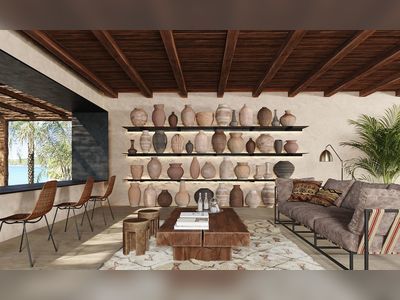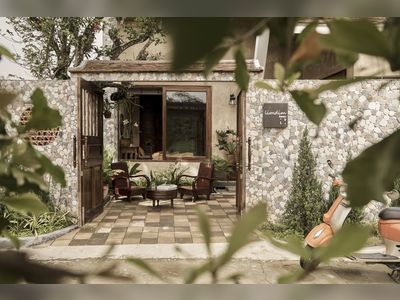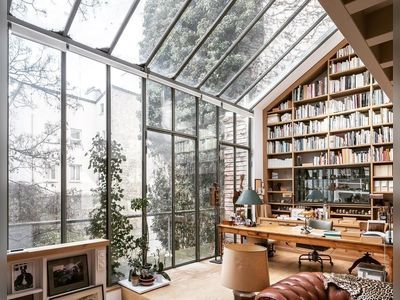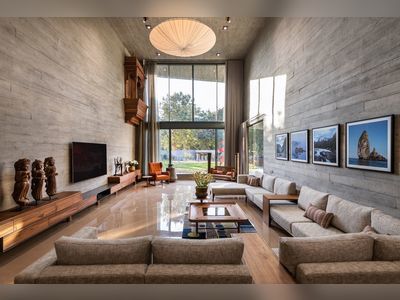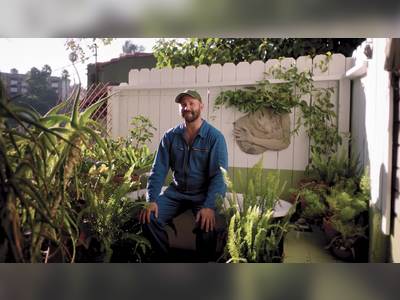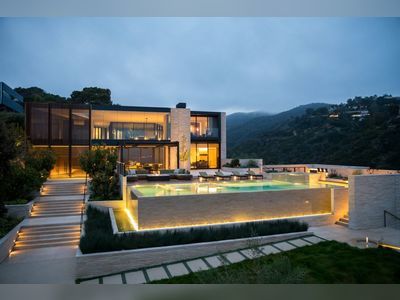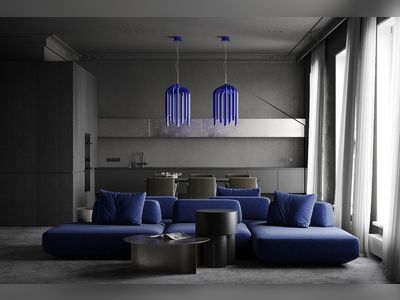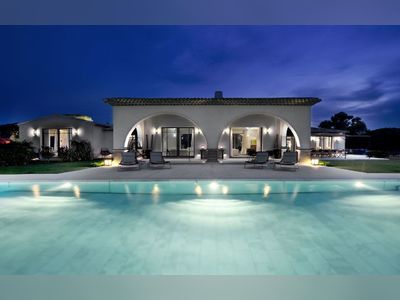In the usually grey and overcast English county of Buckinghamshire one man is known for bringing light. "I grew up in England in an old building with no windows at all," says Angus Hutcheson, chief designer for contemporary lighting and furniture company Ango. "I remember it was very dark - when I was about 10, I started making a hole to let the light in. That was the start of my fascination with light, and later on I often found myself thinking about light and electrical lights."
Ango designs harmoniously combine ecology and technology to create beautiful, exotic lamps.
The Chrysalis Skylight design, for example, is an illuminated sphere of hanging globes suspended from a delicate structure of silk cocoons. Strands of silk are attached to a hand-brushed stainless-steel frame, and the layers for the cocoon are slowly built up. Unlike ones from commercial silk farms, Ango's silk cocoons are unprocessed.
Once the cocoons are "spun", they are supported on a hand-soldered wire frame.
"The core idea is to make designs that in some way [combine] nature and technology, and lighting is a good medium for finding a connection between the two different things," notes Hutcheson, who has moved from his original career in architecture to smaller structures.
"When I moved to Thailand five years ago, everything came together. [I found] the right materials and people to work with. Also, the business is so much simpler. I have ideas, and try to make the ideas a reality. Sometime you can, sometime you can't. Put it out there: if people like, it's fantastic."
Since the company first made its funky lamps available, in 2003, Ango has won quite a few awards, including two first places for lighting from the Elle Deco Awards Thailand 2004, and the Cote Sud Award, Maison Objet, Paris 2007.
The character of the brand is hard to describe, says Hutcheson. The mood of the lighting created has an organic hand-made feel to it, a magical quality that Hutcheson says is vital to his work.
The Stone series of lamps was inspired by the piles of stones, or cairns, that the Scots and the Irish build as landmarks and monuments in the countryside. "My inspiration was to make an electrical-light version. Trees are another thing that people often treat as sacred," says Hutcheson of the magic he sees in the natural world.
The distinctive features of Ango's products heavily rely on the development of new composite materials, usually from a combination of natural and man-made materials. These renewable resources include silk cocoons, rattan, mulberry-tree bark, and hand-cast polymers that require minimal energy to process. Most of them can be found in Thailand: the silk cocoon and raw silk from the Northeast, the rattan from the South and the mulberry tree bark from Chiang Mai province.
Angus is full of tips on lighting. Most important, he says, is to have a range of lighting sources so that you can change the mood easily with different combinations. Examples of these include general lighting, specific lighting and mood lighting. "Another tip - which is reflected in my house here in Bangkok - is that if you have a glass wall, put the lighting outside. We have a problem in Thailand with the heat. By putting the light outside you put the heat outside. If you live in a condo, you could place the lights outside on the balcony with some plants."
Ango's products are exported to countries all over the world. In Thailand they are available at Panta in Siam Discovery Centre. Their lamps are on display until October 31 at Gaysorn's Design World Festival, which also features more award-winning designs by renowned Thai designers Ayodhaya, Yothaka, Beyond Living, Crafactor, Touchable, Harnn and Thann, Gavang, Planet 2001, and Stone and Steel.
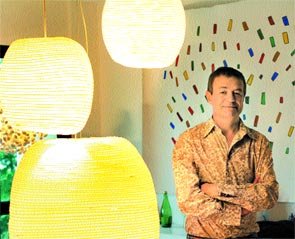
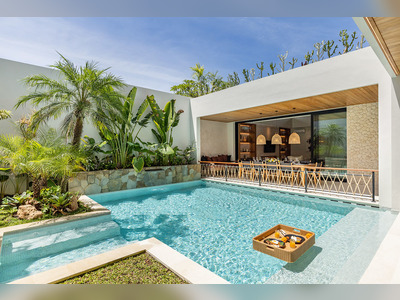
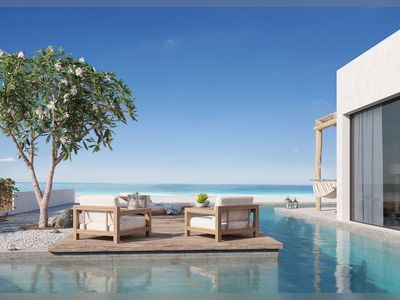
![A Tranquil Jungle House That Incorporates Japanese Ethos [Video]](/images/22/08/b-2ennetkmmnn_t.jpg)
